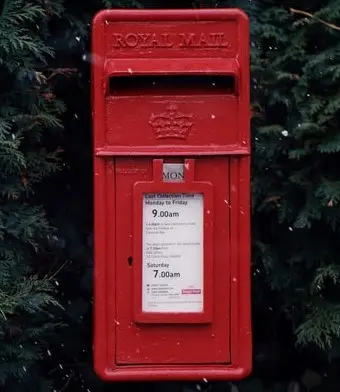5 min. read




Shipping from UK to Europe After Brexit: Top Insights
Shipping from the UK to Europe has undergone significant changes post-Brexit, leaving businesses and individuals navigating through new challenges. The once familiar landscape of cost-effective transactions and smooth deliveries now requires a closer look. In this guide, we’ll unravel the complexities brought about by Brexit, offering you insights and practical tips for successful shipping in this new era.

Parcel Deliveries to the EU: Navigating Customs Changes
Changes in Sending Parcels Post-Brexit
Sending parcels from the UK to the EU, including countries like France, Spain, Germany, or Italy, has undergone significant changes post-Brexit. The most notable shift revolves around customs documents and associated fees.
Customs Declarations for Private Individuals
Since January 1st, 2021, even private individuals sending parcels to family and friends within the EU must complete a customs declaration form. This form needs to be securely attached to each parcel and should provide a clear breakdown of the contents, their values, and an 8-digit HS Code (commodity or tariff code). This requirement is applicable to all items, irrespective of whether they are new, second-hand, or personal belongings.
Recipient Responsibilities and Customs Fees
When dispatching a parcel from the UK to the EU, recipients may be subject to customs duties and import VAT. It is crucial to provide accurate contact details for the recipient to facilitate communication with customs authorities.
Understanding Customs Duty and Import VAT
Determining the exact amount of customs duty and import VAT involves considering several factors. Customs duty calculations are based on the item’s value, origin, and type, with different items incurring different duty percentage rates. If the item is entirely made in the EU, customs duties may not apply.
Import VAT is charged based on the overall value of the item, encompassing shipping fees, insurance, and any incurred customs duties. It’s important to note that each EU member country sets its own VAT rate, resulting in variations. Detailed information on VAT rates can be found here in the details on VAT Rates in Europe 2024.
Sending parcels to Europe from UK: Top Tips Post-Brexit
Clarity is Key: Describing Your Items
When shipping to Europe from UK after brexit, ensure crystal-clear details about the contents. If it’s clothing, provide a detailed breakdown, such as “1 black shirt, 2 white pants, 1 pair of red socks.” This precision aids in smoother customs processing.
Cracking the Code: Finding the Tariff/HS Code
To streamline the customs process, find the correct Tariff/HS code for your items. Websites like Gov.co.uk or a quick Google search for ‘HS Code lookup tool’ or ‘Tariff Code lookup’ provide easy-to-use tools. These codes categorize your items, ensuring accurate customs assessment.
Connectivity Matters: Accurate Recipient Information
One of the crucial elements for a hassle-free parcel journey is providing accurate contact details for the recipient. If customs authorities can’t reach them, your parcel might find its way back to you. Double-check and ensure correctness!
Secure Dispatch: Affixing Customs Documents
Make sure your customs documents are not just included but securely affixed to your parcel. A clearly marked envelope containing up to three copies (depending on the carrier) ensures that customs authorities can swiftly access and process the necessary information.
Time is of the Essence: Allowing for Extra Delivery Time
In the post-Brexit landscape, patience is a virtue. Recognize that the additional time required for goods to clear customs may impact delivery times, especially for road services. Allowing for this extra time ensures both you and the recipient remain informed and understanding throughout the process.

Sending Gifts to Europe After Brexit: Navigating the Rules
Sending gifts to Europe post-Brexit follows a similar path as sending other parcels. The key is to illuminate this process, ensuring your thoughtful gestures reach their destination seamlessly. Consider a scenario where you wish to send a beautiful piece of jewelry as a gift.
Rules: Same Journey as Parcels
The regulations for sending gifts to Europe mirror those for parcels. Provide detailed descriptions of your items – for instance, if it’s a piece of jewelry, describe it as “1 silver necklace with a heart pendant.” This clarity helps customs authorities understand the nature and value of the gift.
Crucial Code: Assigning the Right Tariff/HS Code
Just like with parcels, finding the correct Tariff/HS code is essential. Let’s say your gift is a delicate piece of porcelain. Utilize tools like Gov.co.uk to assign the accurate code for porcelain items. This ensures a smooth customs process, allowing your precious gift to reach its destination without unnecessary delays.
Expressing Care: Secure Packaging and Timely Delivery
Gifts, especially those of sentimental value, deserve special attention. Ensure secure packaging and affixing the necessary customs documents in a marked envelope. Additionally, recognize that allowing extra time for delivery, considering customs clearance, is crucial for a timely and stress-free gift-giving experience.
Final thoughts on Shipping from UK to Europe After Brexit
In wrapping up our journey through the changes post-Brexit, shipping from the UK to Europe has taken on a new look. Though uncertainties linger, adapting to these shifts with care and awareness ensures your parcels reach their destination smoothly.
Jetkrate, committed to making post-Brexit shipping effortless, extends its seamless process to sending parcels, gifts and other brand products. Whether it’s a piece of jewelry or delicate porcelain, Jetkrate ensures that your shippings are handled with care, complying with all regulations. Trust Jetkrate for a worry-free shipping experience – your trust, our commitment!
If you are not from the UK you also can shop from top UK online shops and use Jetkrate to shop like a local resident and ship to any countries.
FAQ
How has sending parcels to Germany from the UK changed after Brexit?
Post-Brexit, sending parcels to Germany involves additional steps. Customs declarations are now required, specifying contents, values, and an 8-digit HS Code. Recipients may be subject to customs duties and import VAT. Providing accurate recipient details is crucial, and the process may take extra time due to customs clearance.
What are the rules for sending gifts to Spain from UK after Brexit?
The rules for sending gifts to Spain remain similar to parcel shipping. Detailed customs declarations, including item descriptions, values, and HS Codes, are essential. Recipients might incur customs duties and import VAT. Providing accurate recipient information is crucial to avoid any complications. For example, if you’re sending a gift like a watch, ensure it’s well-described in customs documents for a smooth shipping experience.
Explain Royal Mail posting to Northern Ireland?
Yes, Royal Mail provides posting services to Northern Ireland. However, with the new regulations post-Brexit, there might be changes in customs procedures. It’s advisable to check with Royal Mail for the latest information on posting parcels to Northern Ireland and ensure you comply with any additional requirements or documentation needed for a hassle-free service.
